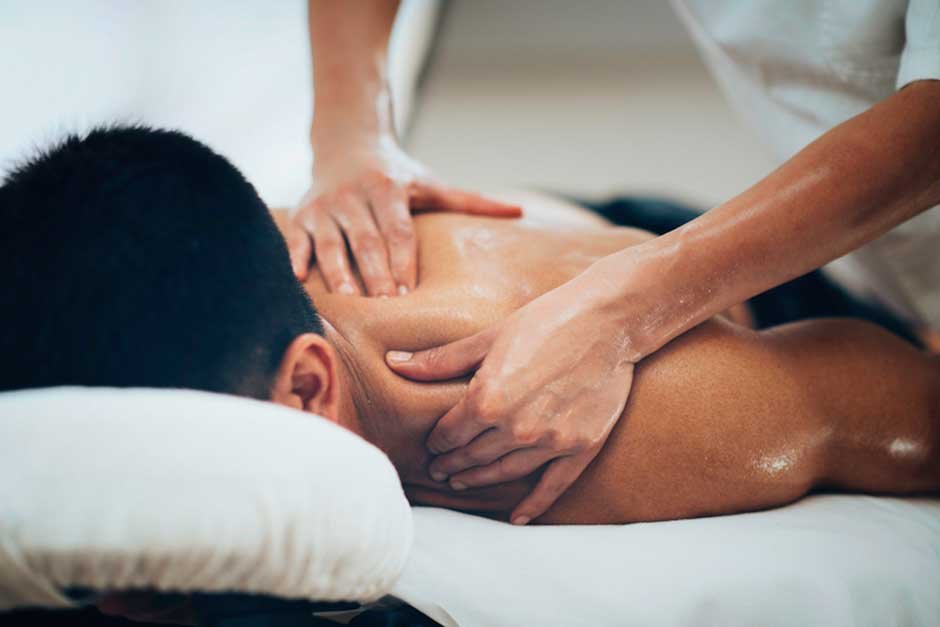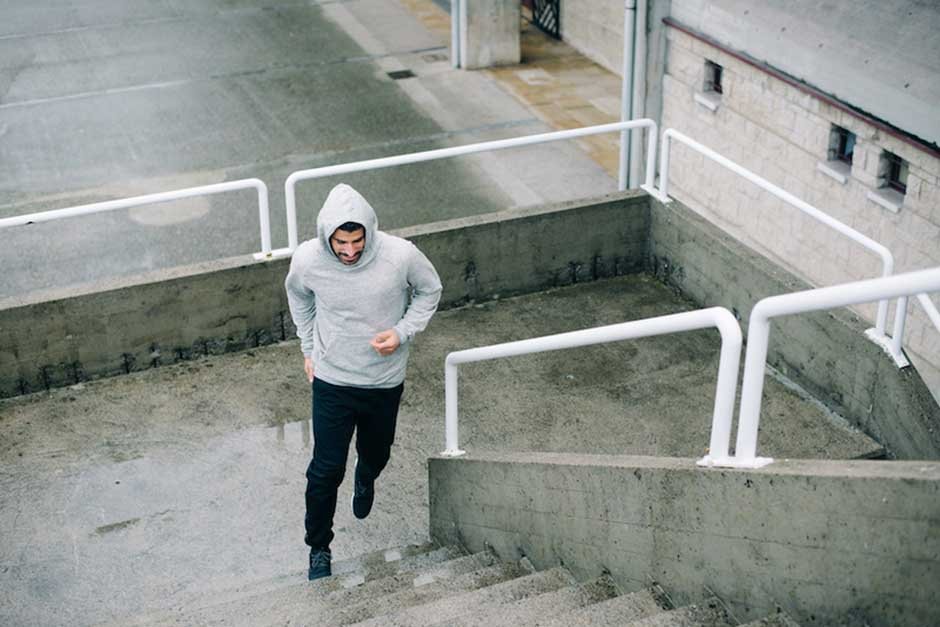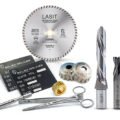
Reducing soreness after a workout comes down to improving circulation and giving your body quality rest so it can regenerate well.
Here are five tips to accomplish those goals and reduce post-workout soreness.
1. Get a Massage

You can start getting a massage a couple of times a week, or at least once a week if you can.
Ideally, you’d do it after a heavy lifting or cardio session. Otherwise, just try to avoid getting a massage before a workout session as your muscles might be tender from the therapist digging into them.
Massage has been a popular form of post-workout recovery for centuries and has been proven to be highly effective in reducing muscle soreness, stiffness, and fatigue.
Post-workout massages help to improve circulation and increase oxygen and nutrient flow to the muscles, promoting faster recovery. Massage therapy also helps break down lactic acid buildup, which can cause muscle pain and discomfort after intense physical activity.
Beyond recovery, massages can also benefit you as an athlete in other ways.
They help relieve tension in the muscles to improve flexibility and mobility, helping you maximize performance for the next session, and reducing your risk of injury.
At the end of the day, massages just feel great. So, if it’s possible, start getting into the habit of getting one as frequently as it makes sense for you.
2. Sit in the Sauna
Sauna has similar benefits to a massage, but they’re achieved in a different way.
A sauna session after physical exercise can aid in reducing muscle soreness and pain, improving circulation, and accelerating the healing process.
Heat exposure in a sauna can increase blood flow, which helps to carry oxygen and nutrients to the muscles and assist in removing waste products such as lactic acid, similar to the recovery benefits of a massage.
Some version of a sauna has been used in a wide variety of cultures for centuries to promote healing and wellness, but recent research on its many benefits has placed sauna use among the top recovery tools for athletes and wellness enthusiasts.
Sauna use is also widely prevalent in Nordic and Scandinavian countries, and many people attribute this habit to the positive impacts on health and mood you find among the people in those countries.
Sauna therapy also has mental health benefits. Heat exposure and relaxation in a sauna can help to reduce stress levels, increase feelings of well-being, and improve overall mood.
As you may have noticed, faster recovery and reduced soreness often come down to better circulation, and the next tip might be the ultimate way to improve circulation.
3. Do Some Light Cardio

What better way to boost circulation than a light jog on the treadmill or around the neighborhood?
If you’re not the jogging type, you can achieve similar benefits with a long-ish walk. Just enough to get the blood pumping so it can deliver nutrients and oxygen to your sore muscles.
Of course, a light mobility drill before your jog or walk will only accentuate the benefits.
If you’re someone that hates the idea of jogging on the treadmill or jogging in general, just try to think of it as part of your strength training regimen.
Improving cardio will increase your work capacity, which will also help you complete more sets and reps, along with better recovery.
Aerobic exercise has also been proven to help mood and sleep, and sleep just happens to be one of the vital parts of your recovery toolkit, as we will discuss below.
Cardio often gets a bad rep, because many exercise newbies often spend every day at the gym running on the treadmill to lose weight.
While running endlessly isn’t the best method for body recomposition, some cardio can definitely have outsized benefits, especially when combined with a strength training routine.
4. Take a Reds Supplement
A red supplement is like a greens superfood powder but made with red fruits and vegetables.
It may include vegetables like beetroot and fruits like berries, apple, pomegranate, etc.
Health-aware people have been inundated with content and advice about the importance of green, and rightfully so. But the importance of reds is often ignored or understated.
Along with delivering a heavy dose of antioxidants to fight harmful free radicals, red fruits and vegetables play a vital role in optimal blood circulation.
They contain flavonoids that help relax the arteries (known as vasodilation) to help blood move around easier, and once again, deliver oxygen and nutrients to sore muscles for faster recovery.
A heavy dose of reds a few times a week might have you starting to notice how you don’t get so sore after workouts anymore. It can also improve how you energetic you feel throughout the day.
But it’s usually quite difficult to eat an adequate amount of reds just from our diet, especially if you’re a busy professional.
The easiest way to include reds in your daily routine is to take a reds powder supplement like Naked Reds. It contains eleven reds fruits including berries and a lot more.
5. Get a Proper Night’s Rest
As mentioned before, without good sleep, there is no optimal recovery.
When you sleep, your body goes through several physiological processes that help repair and regenerate damaged muscle tissue.
Enough sleep is essential for the increased production of human growth hormone (HGH), which plays a crucial role in muscle growth and repair.
Evidence suggests that people who sleep 7-9 hours per night experience faster muscle recovery compared to those who sleep less. Sleep also helps with reducing inflammation and promoting overall muscle function.
Your body produces cytokines that help to reduce inflammation and promote muscle recovery, while the stress hormone cortisol decreases.
Additionally, good sleep also helps improve the body’s insulin sensitivity, which plays a crucial role in muscle growth. This means that the muscles can effectively absorb glucose and other nutrients that are necessary for recovery and growth.
Bottom Line
Try to incorporate some of these tips into your recovery routine for reducing soreness and getting back to the gym sooner.
The only one that is a MUST is good sleep. Beyond that, the more you can do the better, but do the best you can.
For example, it’s ideal if you can do cardio, hit the sauna, get massages, and take a supplement.
But if you can’t do all, maybe just do some cardio and hit the sauna, or whatever fits your life, and you’ll improve your recovery significantly.

